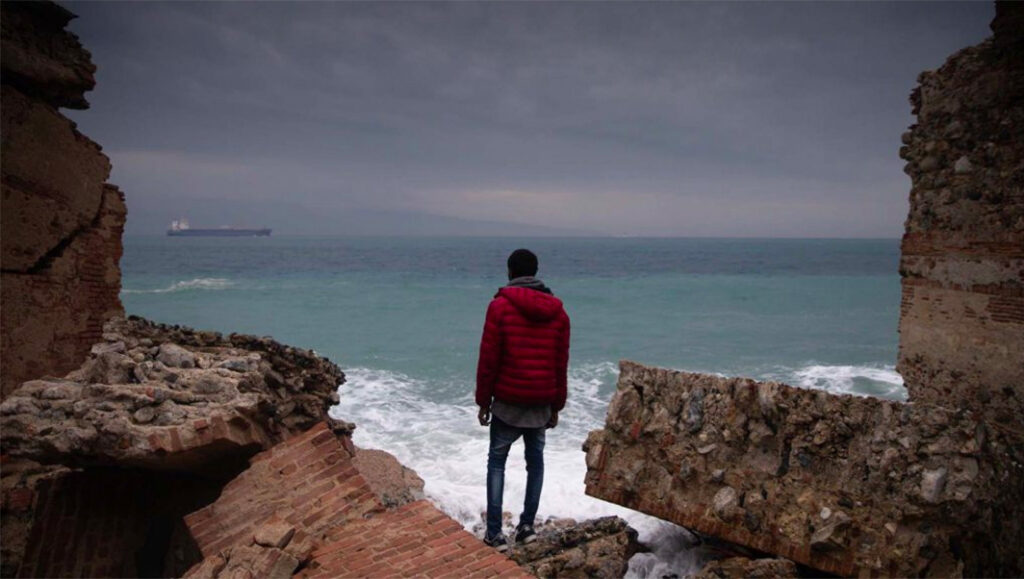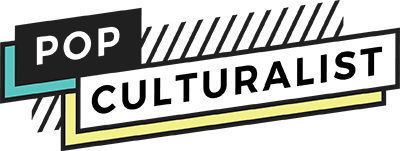Slamdance 2024 Interview: Stephane Grasso Discusses the Multimedia Project, Migrant Sea

Stephane Grasso, a seasoned Canadian filmmaker and multimedia journalist with over fifteen years of expertise, is renowned for his work in directing and producing documentaries, films, commercials, news, and music videos on a global scale. His unwavering commitment to creating content that champions human rights and amplifies the voices of the unseen, disadvantaged, and oppressed is evident in his latest multimedia project, Migrant Sea, which is set to make its world premiere at Slamdance.
In Migrant Sea, Stephane takes audiences on a compelling migration journey, tracing the paths of migrants from their home countries to the challenges they face while forging new lives in Europe. The project uniquely prioritizes the voices, thoughts, and perspectives of the migrants, providing a profound exploration of the social issues and realities that often remain obscured behind the headlines.
Pop Culturalist had the pleasure of speaking with Stephane about Migrant Sea, the importance of trust in documentary filmmaking, and more.
PC: Migrant Sea is making its world premiere at Slamdance 2024. There are so many unique elements to this multimedia documentary. What inspired this experience and project? At what point in the process did you realize you wanted to bring together all these different forms of storytelling?
Stephane: That’s a long story, but the genesis of this project came from the fact that I’m half Italian and half French. I was born and raised in Canada, but I spent a lot of time in Italy with my family cumulatively over the years. Since I was a kid, I saw a lot of African migrants show up and do odd jobs.
Something that I noticed more and more in Italy since the early 2000s was these rescue operations of these boats in the Mediterranean. This is before it was widely covered elsewhere in the world. So all through the 2000s, I would see this happening a lot. There were a lot of migrant deaths and sinking.
Then in 2011, there was the Arab Spring, the Libyan Civil War, and the Syrian Civil War. That caused a lot of people from Syria, Levant, and the Middle East to cross from the Mediterranean through Greece. At the same time, there was an increase of African migrants coming through Libya and crossing to Italy.
Those were two different phenomenons. With Syria, it was due to the Civil War. They were escaping war. But the sub-Saharan migrants were from thirteen different countries below the Sahara Desert. So in Africa, they came from all these different countries for different reasons. It could have been climate or politics. Some of them are refugees. It’s all these different reasons and that’s been going on for the past twenty to thirty years. That’s never going to stop because of so many different reasons. Some of it is instability, some of it isn’t.
Is it Europe or the West’s responsibility for why people are leaving unstable situations in Africa? That’s a whole other conversation. So the reason that I wanted to do the project is that I’d long seen these journeys happen. I also happened to marry a human rights lawyer who focuses on that. She really brought it to my attention that the media coverage that we were seeing specifically around 2015 when we were having a lot of Syrians, Afghans, and Iraqis coming over from Greece, and the Africans coming from Libya, is the media saw these rescues at sea because people were being rescued from their boats. That’s when the media dubbed it the Migrant Crisis.
It was seen as this one big crisis. But I found that to be pretty misleading because it’s two completely separate flows and two completely different sets of reasons. That upset me. Also, the thing that got to me is that I noticed most of the coverage, which is still true to this day, was focused on inside Europe or the West looking outwards. So seeing these people coming into Europe was a term called Fortress Europe. It’s very apt. It’s basically Western media from the perspective of the West, which I understand to a certain extent, but it was portrayed as these masses of anonymous suffering Africans and their boats being rescued. That was the overwhelming amount of stories that I was seeing.
I was like, “Where are their voices? Where are their stories?” By that point, I had been working with the human rights non-governmental organization for several years. That was the path that I had taken in my own work. I got tired of seeing these docs, even the well-meaning ones. They’re always about the people. I wanted to make something with the people telling their own stories. But it had to be more collaborative than just shoot the interview. You really have to do the work to get their authentic voices and to have their stories portrayed authentically. That’s all to say that’s where the project came from in terms of the content and the approach.
In terms of the formats, I’ve been an advertising/documentary filmmaker for a while. I’ve also worked in journalism and photojournalism. The reason why I wanted to create this multimedia project is because I wanted to create something where the audience had the maximum amount of avenues to experience the story, no matter how you wanted to experience it. If you’re on your phone and want to watch a video, you can do that. If you want to watch VR, you can. If you want to read something, I have a first-person documentary essay. If you want to see photos or listen to audio while you’re walking around, we have that. So everything is pretty much covered.
I just wanted to give audiences as many opportunities to experience these stories in a lot of different ways and take advantage of that as well. An unintended side effect of that was when I went to film this, it was cool to have all these different media options because when I sat with people and explained the project, I was like, “So tell me what would make you the most comfortable.” Because if you want to remain anonymous, let’s do an audio interview. If you feel funny about having a camera follow you, let’s just do a photo documentary. I would let people choose what they were comfortable with from the beginning. I gave them as much control over the doc as possible, even in the editing process. I made sure that it was a collaborative process throughout. I would send them rough cuts. I still send them rough cuts for accuracy.
PC: It’s such an impactful project. This documentary is so raw and authentic, and you’re creating the space for these individuals to share their story and these personal events, which I imagine requires a lot of trust between you and them. How were you able to foster that environment where they felt so open and empowered to share their stories?
Stephane: That’s a really good question. I would always do the interviews last. Like I was said, this was a very collaborative project. In certain situations and projects, you want to do the interview as soon as possible because you don’t know what’s going to happen later on. But with this, it was such a collaborative process that I knew that the interviews were going to be very long and some interviews lasted three hours, which is super long. They required a lot of intimacy and energy, and I wanted there to be that trust. So what I would do is that I would spend a week just hang out before filming. Then once I did the interview, it was a lot easier because you get to know them as you’re filming. I would have my interview questions, but I could also be like, “I remember you mentioned this. Could you tell me more about it?” That’s how we fostered that intimacy and trust.
I’m also fortunate that I’m half-Italian, half-French, and grew up in Canada. So I speak Italian, French, English, and Spanish all fluently. The Italian, French, and English were very beneficial because generally a lot of the time African migrants will speak that from the get go, on top of their local languages or dialects.
A lot of these kids are nineteen and speak like five languages. It’s crazy. Another piece of interesting insight is that a lot of these people from all these countries in Africa end up at these reception centers in Italy. Because they don’t all speak the same language, they all have to study Italian together there. Italian becomes the common language. It was really surprising for me when I showed up and I realized it’s like all these African kids are speaking Italian with each other, which makes sense. But you only experience it when you show up. That was another way that we were able to create that intimacy because no matter what language, I could also leave it up to them to decide if they wanted to speak French, Italian, or English. All of these elements made a good relationship. I consider a lot of these people my friends. I still get in touch with them on their birthdays, etc.
To keep up with Stephane, follow him on Instagram. Learn more about Migrant Sea here.


Discussion about this post